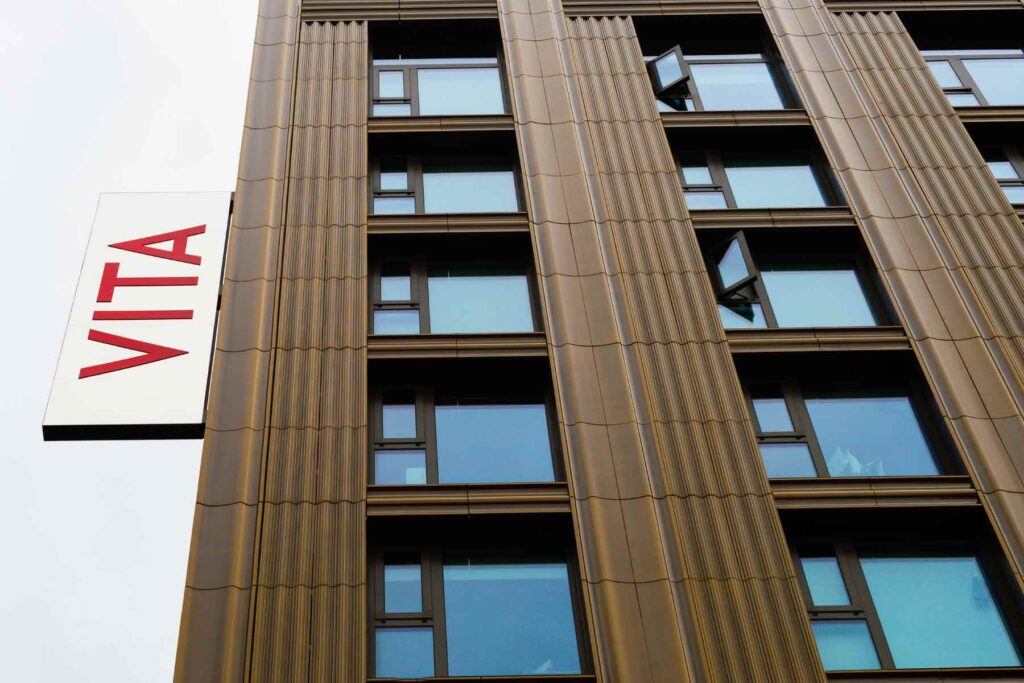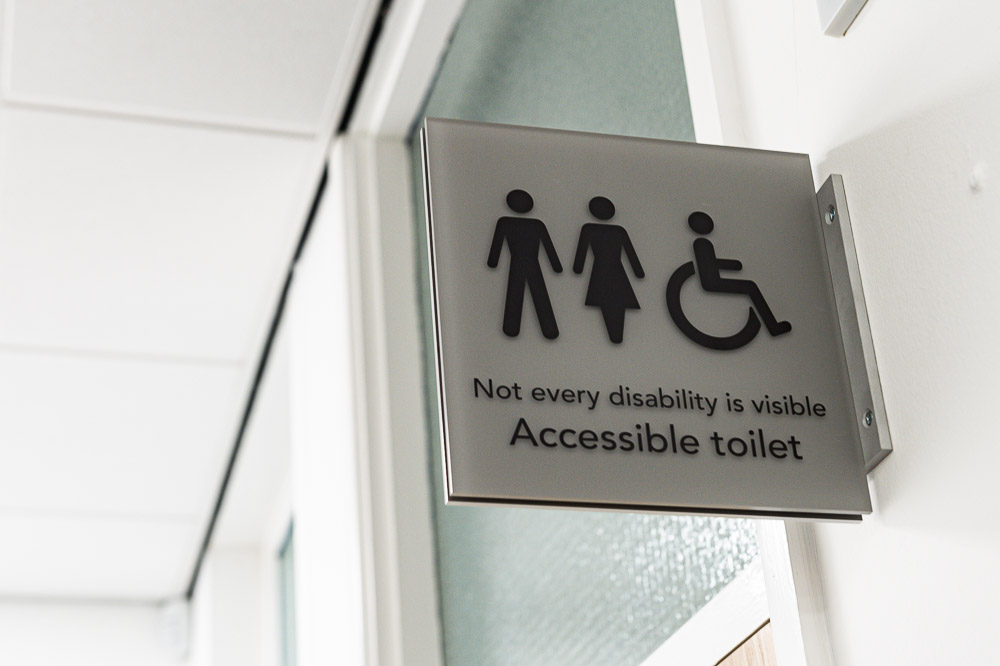The purpose of a sign is to grab attention and provide some wayfinding direction. In the process of creating a signage scheme, there are a number of factors to consider. Firstly, signage should be easily visible and there should be good contrast with its surroundings. Secondly, the signage should be legible, with highly visible text, printed at good quality resolution. Finally, the signage should be placed in obvious wayfinding routes so that it is easy for visitors to use, and not placed in obscure locations. That basic criteria can be met in a number of ways. One option is to consider using a projecting sign type. A projecting sign usually sits at a right angle to it’s fixing location (usually a wall) so that it protrudes in to the wayfinding route. That makes it easy to see.
Projecting signs can be seen from a distance, so that the user of the sign can make his or her choice about wayfinding direction when they arrive at those decision points. The purpose of a projecting sign is to allow the user to navigate smoothly and efficiently; no one wants to get lost when they are trying to find the toilet, for example.
Projecting signage is often quite easy to manufacture, depending on the materials used. The manufacture process of a sign intended to be installed as a projecting sign is often the same process used for a flat, directory signs. The difference is in how the sign is arranged, whether it is double-sided and the fixing method to it’s surface. In order for projecting signage to be effective, text is used sparingly and pictograms are more widely used. Projecting signage is often quite small, so as to not block the wayfinding route, and so pictures are more easily legible than small-print text.
The requirement to constrain the size of the sign only really applies to internal signage, where there is limited space in corridors. For exterior applications, size constraints are less of an issue. Because exterior projecting signage is usually well out of the reach of the passing public, many shops opt for large projecting signs because it grabs the attention.
Exterior projecting signs are less limited by space, so can carry more information than internal projecting signs. That gives room for business name, contact information and branding and slogans. If the sign is installed and subject to the elements, it may need some weather proofing to provide protection. It may also benefit from LED illumination to increase its impact.
Whether a projecting sign is to be installed internally or externally, there are lots of options for architects, brand managers and interior designers to utilise these sign types to attract attention. The point is to make wayfinding noticeable and whether a projecting sign is a small, internal pictogram to indicate a specific part of the building or an outside fixture that promotes a company brand, projecting signs are a useful and valuable wayfinding tool.



